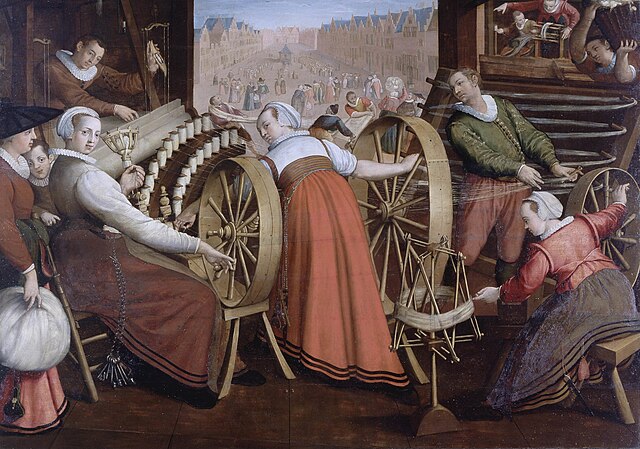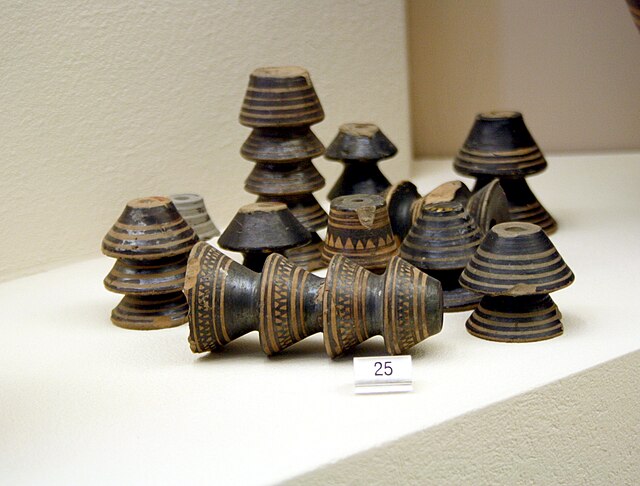Spinning is an ancient textile art in which plant, animal or synthetic fibres are drawn out and twisted together to form yarn. For thousands of years, fibre was spun by hand using simple tools, the spindle and distaff. It was only with the invention of the spinning wheel in the Islamic world circa 1030, and its subsequent introduction to China, India and Europe in the High Middle Ages, that the output of individual spinners dramatically increased. Mass production later arose in the 18th century with the beginnings of the Industrial Revolution. Hand-spinning remains a popular handicraft.
The Spinner by William-Adolphe Bouguereau shows a woman hand-spinning using a drop spindle. Fibers to be spun are bound to a distaff held in her left hand.
Woman spinning, fanned by attendant with whole fish on table, 700–550 BC from Neo-Elamite period in Susa
Woman spinning. Detail from an Ancient Greek attic white-ground oinochoe, ca. 490 BC, from Locri, Italy. British Museum, London.
1595 painting illustrating Leiden textile workers
A spindle is a straight spike, usually made from wood, used for spinning, twisting fibers such as wool, flax, hemp, cotton into yarn. It is often weighted at either the bottom, middle, or top, commonly by a disc or spherical object called a whorl; many spindles, however, are weighted simply by thickening their shape towards the bottom, e.g. Orenburg and French spindles. The spindle may also have a hook, groove, or notch at the top to guide the yarn. Spindles come in many different sizes and weights depending on the thickness of the yarn one desires to spin.
Modern top-whorl drop spindles. The hook at the top allows these to be suspended and the cop is built up below the disk-shaped whorl in a conical shape.
Spindle with cotton yarn, without whorl, representing the "spindle-shape".
A modern Turkish spindle is an example of a low-whorl suspended spindle where the whorl is made up of interlocking arms. Here the cop is wound around the arms to form a ball.
Ancient Greek spindle whorls, 10th century BC, Kerameikos Archaeological Museum, Athens








